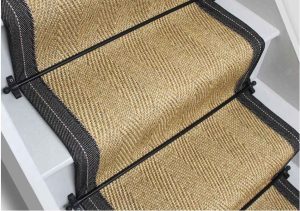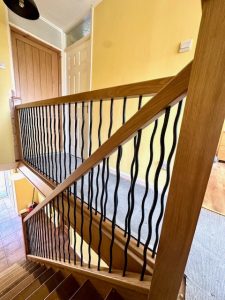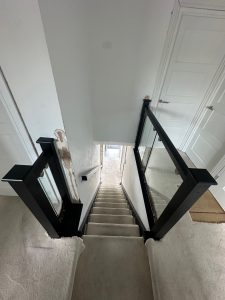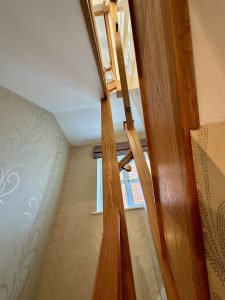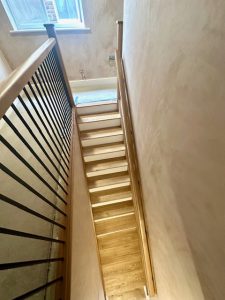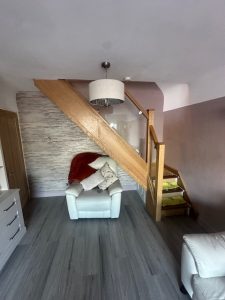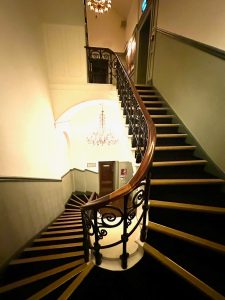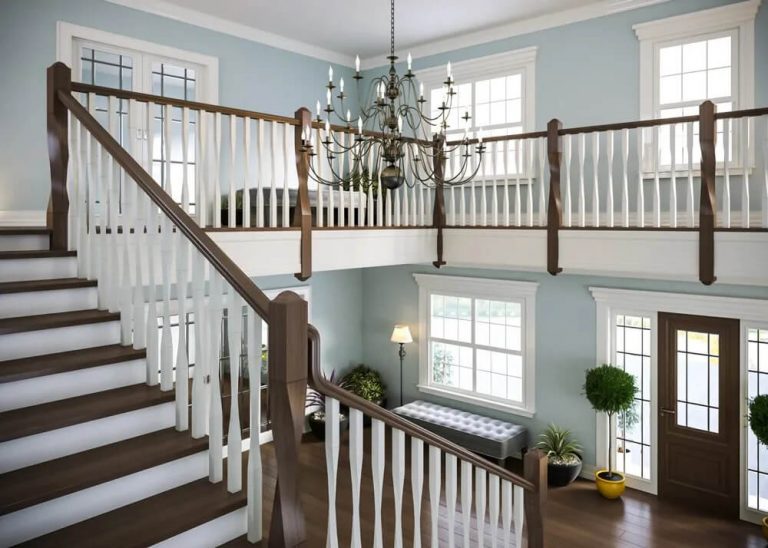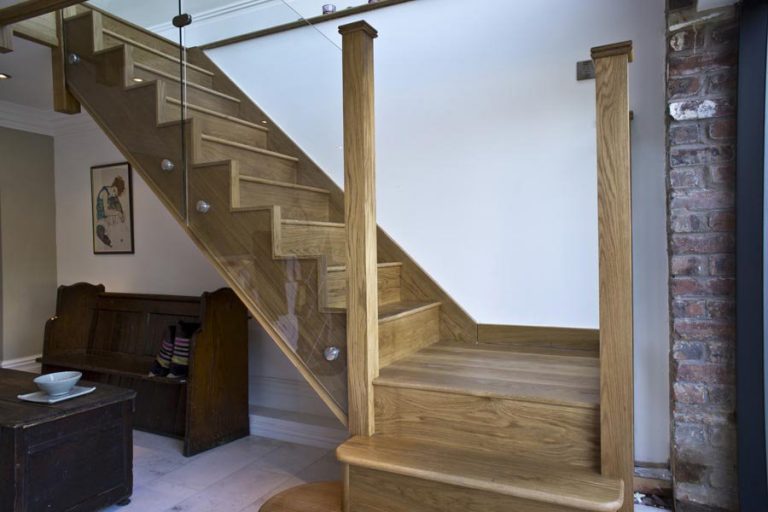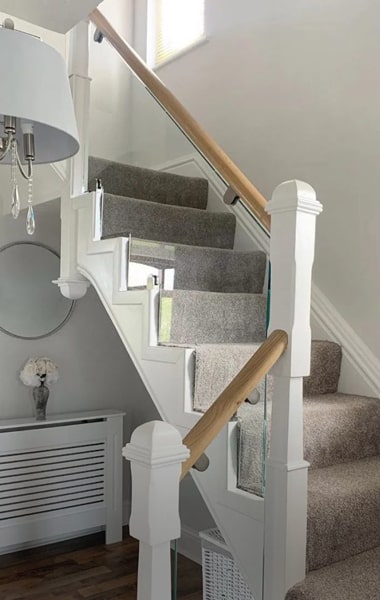Choosing between carpeted stairs and oak treads with risers involves considering various factors including aesthetics, safety, maintenance, and cost. Here’s a detailed breakdown of the pros and cons of each option:
Carpeted Stairs
Pros:
- Safety:
- Traction: Carpet provides better traction, reducing the risk of slipping, which is especially important for children, elderly individuals, and pets.
- Cushioning: In case of a fall, carpet offers a softer landing, potentially reducing injuries.
- Comfort:
- Softness: Carpet adds a comfortable, soft surface for bare feet, making it pleasant to walk on.
- Warmth: Carpet can make stairs feel warmer, particularly in colder climates.
- Noise Reduction:
- Sound Dampening: Carpet absorbs sound, reducing noise from footsteps, which can be beneficial in multi-story homes.
- Aesthetic Variety:
- Design Options: Carpet comes in various colors, patterns, and textures, allowing for customization to match home décor.
Cons:
- Maintenance:
- Cleaning: Carpet can be more challenging to clean, as it can trap dirt, dust, and stains. Regular vacuuming and occasional deep cleaning are necessary.
- Wear and Tear: High-traffic areas like stairs can show wear more quickly on carpet, leading to potential replacements.
- Durability:
- Shorter Lifespan: Compared to hardwood, carpet may need to be replaced more frequently, especially in high-traffic areas.
- Aesthetic Limitations:
- Outdated Look: Depending on trends and preferences, carpeted stairs can sometimes appear outdated compared to the sleek look of hardwood.
Oak Treads and Risers
Pros:
- Aesthetics:
- Timeless Look: Oak stairs provide a classic, elegant appearance that can add value and appeal to a home.
- Versatility: Oak can be stained or finished in various colors, allowing for customization to match other woodwork in the home.
- Durability:
- Long-Lasting: Oak is a hard, durable wood that can withstand heavy traffic and last for decades with proper care.
- Maintenance:
- Easy to Clean: Hardwood stairs are easier to clean; dust and debris can be quickly swept or wiped away.
- Value Addition:
- Increased Home Value: Hardwood stairs are often seen as a premium feature, potentially increasing the resale value of a home.
Cons:
- Safety:
- Slipperiness: Hardwood stairs can be slippery, increasing the risk of falls. Non-slip treads or treatments can mitigate this issue.
- Hard Surface: In case of a fall, hardwood offers no cushioning, which can lead to more serious injuries
- Noise:
- Sound Amplification: Hardwood can amplify noise from footsteps, which might be disruptive in a quiet home.
- Comfort:
- Harder Surface: Oak treads are hard underfoot, which might be less comfortable for some people, especially without shoes.
- Cost:
- Higher Initial Cost: Installing oak treads and risers can be more expensive initially compared to carpet.
Conclusion
The choice between carpeted stairs and oak treads with risers depends on your priorities. If safety, comfort, and noise reduction are paramount, carpet may be the better option. However, if aesthetics, durability, and ease of maintenance are more important, oak treads with risers might be preferable. Consider your household’s specific needs and preferences to make the best decision.


